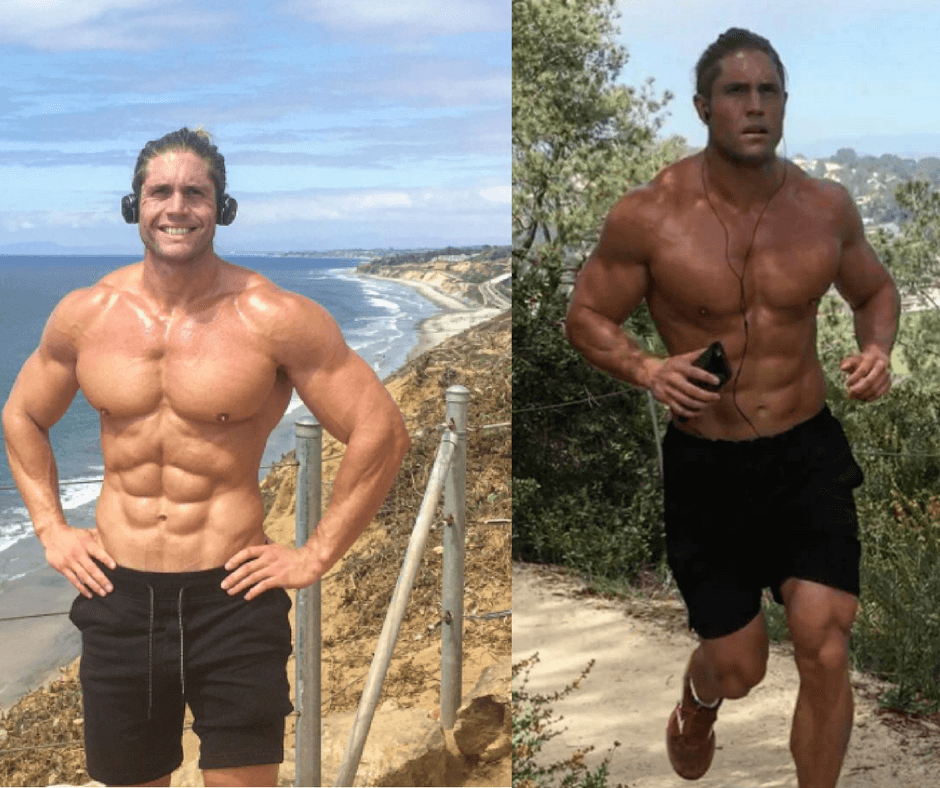How often have you heard the term ‘fasted cardio’ when talking to one of your buddies at the gym?
Or maybe you’ve heard it on a television show, or even read it in your favorite fitness magazine. Either way, someone has an opinion on it.
You’ll find these people generally break up into two sides – either they’re all about fasted cardio, or they’re the team that says fasted cardio doesn’t just NOT work; it’s also dangerous too.
This is one of those cases where both sides are in the right. Fasted cardio is successful if you do it correctly.
However, if you do it incorrectly, it’s going to cause damage.
Much similar to flexible dieting, this concept has actually been around for a while now. However, it’s been in the spotlight once again as an effective way to speed up the fat burning process.
And, of course, it has its never-ending list of both critics and believers. Those who are all for it have their own list of reasoning why they love it. And those who don’t…well, you get the idea.
We wanted to find out for ourselves by looking at the scientific evidence behind fasted cardio, and how it can be used correctly in order to make getting rid of fat easier and even faster.
First of all, when people think of fasted cardio, their minds already jump to “EXCERSIING ON AN EMPTY STOMACH.” And when they think of an empty stomach, they literally just think their stomach feels empty. But this actually isn’t the case.
What Exactly is Fasted Cardio?
Fasted cardio is done when your body is in a “fasted” state.
What’s the difference?
Yes, your stomach is, in fact, empty but it goes a bit deeper than this. Instead, it’s more focused on how exactly your body processes (and absorbs) all the different kinds of food you consume.
When you start munching on some food, it all gets broken down into tons of molecules in order for your cells to use them. They’re then released in your bloodstream. During this time, insulin is also released. Its main job is this – drive these little molecules right into the cells. Your insulin levels will vary depending on the amount of food you eat during one meal. In fact, these levels can stay elevated for hours after. By hours, we mean 3 to 6 or more hours.
As your body is going through the whole digestion and absorption of the food, this is what is considered a “fed” state (also called postprandial state). Then, once it’s all done with the processing and absorbing, your insulin levels are going to drop back down to a baseline level. Here is where your body is in that fasted state (also called post absorptive state).
So to put it in more clear terms…
- When you exercise during the time when your insulin levels are elevated, which means food is being processed still, this is called fed training.
- When you exercise during the time when insulin levels are low (at baseline) and food isn’t being processed anymore, this is called fasted training.
Now you get an idea of what fasted cardio is all about. But we want to look at what being ina fed state vs a fasted state does to fat burning as well as fat storage.
Here’s something that might be unfamiliar to you – as you’re feeding your body, it isn’t burning fat. Rather, it’s storing it.
Insulin has a bigger job than just running these nutrients all around to the different cells.
Its other main area of focus is damaging the breakdown of your fatty acids. So this means as your insulin levels rise, your body isn’t going to use fat as much for energy. This includes both dietary fat and body fat.
And if you think about it, this makes sense.
How can our bodies burn fat when we have tons of energy at our fingertips from the food we just consumed?
So as you eat food, your body is actually turning off the whole fat burning process and is living off the meal it’s eating right now. It doesn’t stop there, though. It also stores some of that extra energy as body fat to use it later.
So as your body is processing and absorbing these foods, you’ll find that insulin levels are going to go down. This is exactly what instructs your body to start reaching for fat as energy, because the fuel from the food you’re eating is coming to an end. And then when everything is said and done, your body is going to be running completely off of the fat stores to get energy.
That’s how it all works without taking exercise into consideration. Now it’s time to jump into what happens when we throw it in.
Is Fasted Cardio Going to Help With Weight Loss?
Most of us know that cardio is the way to quickest way to up the fat burning process. But it’s important to understand how this works, as well as how it fits into your weight loss goals.
Here is the most important thing you should know – if you don’t follow a proper diet, fasted cardio isn’t going to help you get rid of fat faster.
Unfortunately, the laws of energy balance still exist, even with fasted cardio, so you still have to burn more energy than you eat in order to get fat loss.
Despite that info, however, fasted cardio has a few interesting fat loss properties when it’s completed correctly.
Your body isn’t going to break down as many fat cells during a workout if your insulin levels are raised due to a meal right before your workout. This is a simple fact that research has proved to be true time and time again, with both trained and even under-trained volunteers.
However, with that in mind, lipolysis is only a piece of the fat loss puzzle. The other piece of this is called fat oxidation. This is the part you care about, because it’s the process of using, or burning, the fatty acids.
Now your body is capable of breaking down every single fat cell it has and turning into fatty acids it can use; however, a majority of it would go unused, so it would just convert back anyway.

Fasted Cardio Draw Backs?
These people state that, even though exercising when your body is in a fed state equals even less lipolysis during your workout, these fat oxidation levels are not actually affected. So the only thing that happens here is this… your body is only assembling more fat cells than what it’s capable of burning.
But this isn’t actually true.
And there’s a number of reasons why it isn’t. First of all, research has proven the total amount of your fatty acids that’ll be readily available actually maintains oxidation rates.
So it isn’t a surprise that eating carbs can cut back on fat oxidation while you’re resting and before exercising. Case in point – fat oxidation is going to be higher when you’re doing fasted cardio vs. fed.
In fact, there’s a study that shows this to be true. One group ate carbs about 30 minutes before they exercised and even during their session. Another group ingested a placebo drink 30 mins before they exercised, and then carbs as they exercised. The final group had a placebo drink before and during their sessions (obviously, this is the fasted group).
And the fasted group ended up burning the most amount of fat out of anyone. Something to take note of here is the phrasing of “ingested before exercise.”
A certain study that states fasted cardio is worthless reflected that when carbs ingested after the exercise had started (in this case, it would be 30 mins) fat oxidation rates actually didn’t change until the person was exercising for an hour or more.
Various researchers believe this is because of the insulin’s response to carbs being consumed during the moderate exercise, as it is nearly 100% suppressed. So obviously, the levels are going to stay the same during the fasted time.
Sure this is an interesting point, but look at it from a real life point of view.
Who is going to do a fasted workout and then follow up with some carbs 30 minutes into the exercise?
Probably no one – I mean, I don’t know about you but I don’t see people running on the treadmill with a hoagie. Us normal people consume our carbs 15-30 mins before we start exercising.

Fasted cardio has another benefit, too. It doesn’t just get rid of fat – it helps you get rid of that annoying stubborn fat. For the ladies, we all know this is the butt/thigh/hip around. And the guys, it’s usually lower back/abs/obliques area.
We’ll give you a quick science lesson. Our fat cells have 2 different kinds of receptors. Alpha receptors and beta receptors. Betas are your friends – they’re the ones that are going to quicken up fat mobilization. Alphas, on the other hand, actually hinder it.
So if a fat cell has more alpha-receptors in it, it’s going to be pretty resistant. The more beta it has, however, the more receptive it is to getting to the fat-mobilizing molecules.
You might have already put two and two together. But we’ll spell it out just in case.
The areas and different parts of your body that get lean and trim fast have more fat cells that have more beta-receptors in them. On the other hand, the problematic areas that have that stubborn fat have more alpha-receptors.
Another issue that contributes to stubborn and annoying fat is actually in connection with our blood flow. When there’s less blood flowing to certain seas, there isn’t going to be able much catecholamines getting to the fats cells, so the fat loss process is going to be slowed down.
So How Can Fasted Cardio Help?
Well, when you’re in a fasted state, blood flow is increased. So the catecholamines are going to be able to get right to the stubborn belly fat easier. And that’s good news for us.
Of course your next question is likely – what is the best kind of fasted cardio to do?
We’re already big supporters of high-intensity interval training (HIIT). We love it for ourselves and we also love that major research has been done by places like University of South Wales, east Tennessee State University Baylor College of Medicine and Laval University. They’ve all proven that shorter, more intense cardio session have better results in terms of fat loss, especially over long periods of time.
So it goes without saying – aim for the high-intensity interval cardio. You want to keep it at 4 or fewer sessions a week, with about 25-30 minutes a session.
You can also do weightlifting as it causes a big increase in plasma catecholamine levels. Though you might be a bit weaker as you’re making the switch from fed weightlifting to fasted weightlifting, it’s to be expected.
Now there is one caveat with fasted cardio – and that’s the loss of muscle. In order to make the most out of this kind of training, you should supplement with a few different things. This includes HMB (B-Hydroxy B-Methyl butyrate), Caffeine, Yohimbine, and CLA for fat loss, which has just about everything you need in it.
Conclusion
But the bottom line when it comes to fasted training is this – it isn’t the only method available. However, it’s a pretty useful method that’s worth trying out.
One of the biggest perks with this type of training is the fact that it really targets those stubborn areas. Because they can be the most difficult to see some results, this makes it worthwhile to a lot of fitness lovers.
-Terry Asher
Terry
Latest posts by Terry (see all)
- How Important Are Net Carbs For Building Huge Muscle? - Apr 28, 2017
- The Matt Damon Workout Explained - Apr 27, 2017
- Watercress – Benefits And The Best Way To Consume It - Apr 26, 2017












[…] Fasted cardio is the theory that doing cardio in a fasted state burns more fat. Some say it is effective while others say it is dangerous. Both are right in this argument. It is effective when you do it right and harmful when you do it wrong. You can burn stubborn fat and you can burn lean muscle. It’s all about doing it the right way to see the best results. […]